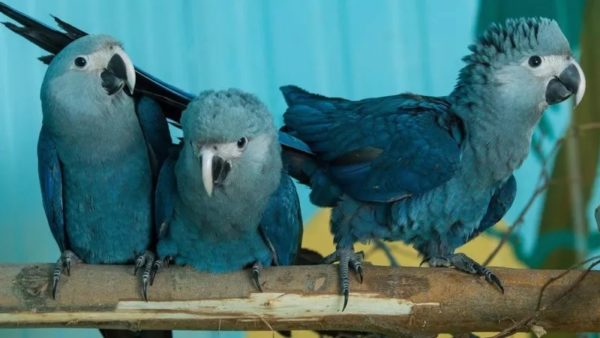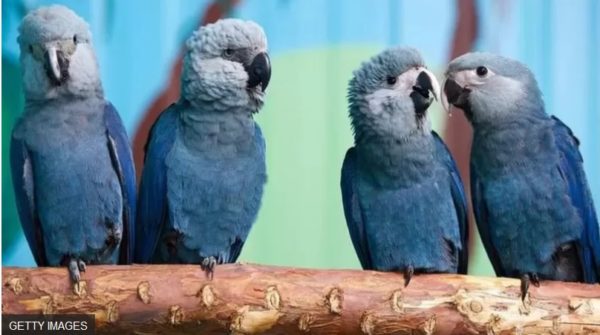Blue Macaws Saved from Extinction after inspiring the Movie Rio

A month ago a group of Spix’s macaws was released into a protected area in northeastern Brazil, after they were declared extinct in the wild in 2019.
By BBC Mundo (El Mostrador)
HAVANA TIMES – In 2019 a study by the international organization BirdLife declared that the Spix’s macaw, a rare blue bird that inhabited northeastern Brazil, had become extinct in the wild and that only about 50 specimens remained in captivity.
The news did not go unnoticed among the general public because that species had served as inspiration for the popular film “Rio”, which Dreamworks studios released in 2011 and told the story of a blue parrot that was the last of its kind.
However, this week German and Brazilian conservationists have managed, after two years of research, to reinsert a group of couples of these birds in their natural habitat.
“The project is going very well,” biologist Tom White of the US Fish and Wildlife Service and technical adviser to the rescue project, told the Guardian.
“It’s been almost a month since we released the birds and they’ve all survived,” he said.
The Spix’s macaws were bred in Germany with the help of artificial insemination, and were then taken to Brazil, where their reintegration into the wild took place.
Extinct and famous
Concern about the conservation of these birds began 20 years ago, when the last sighting in the wild of a specimen was documented.
First identified in the mid-nineteenth century, the species suffered with the reduction of its habitat, especially with deforestation in this area of Brazil.

After the declaration of extinction in the wild in 2019, efforts merged to avoid its definitive disappearance.
This effort has been led by the Association for the Conservation of Threatened Parrots, which managed to gather a group of Spix’s macaws, hold meetings with the communities where these birds were going to be released, and now supervise their reestablishment.
Before leaving his post, Brazil’s former President Michel Temer declared the northeastern state of Bahia a protected area.
The Association also spoke with the local community, which in the past had hunted another blue macaw (the hyacinth macaw) for its feathers, so that they would not do the same with the newly entered group of birds.
“We know how to reintroduce parrots, as there are now several publications and case studies that show that yes, we can get birds, release them into the wild and have them survive,” Don Brightsmith, a conservation and bird expert at Texas A&M University who advises on the project, told the BBC.
So far the pairs of Spix’s macaws that were released into the protected area have remained close to the place where they were released, but have already begun to familiarize themselves with the food in their new habitat.
“The key, and one of the objectives of this project, is that the birds manage to reproduce in the fastest way, but above all independently in this new environment,” he says.





